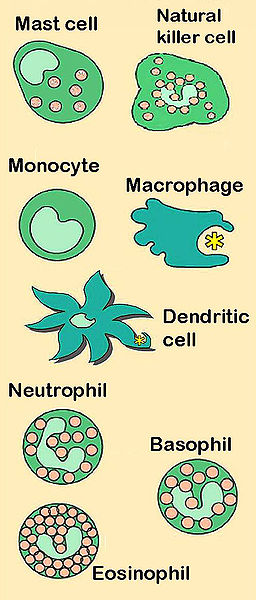They discovered that the production of the peptides displayed on the cell envelope is not necessarily done through the proteasome (as was commonly thought until now); Understanding this mechanism may help in finding vaccines for various diseases or improving existing vaccines

Technion researchers recommend reexamining the accepted theory of early warning in the immune system. In an article recently published in the scientific journal Molecular and Cellular Proteomics, the researchers report that they discovered that the production of the peptides on the cell envelope is not necessarily done by the proteasome, as was commonly thought until now.
"Cells have proteins that break down all the time, in different breakdown pathways," explains Professor Arie Edmon from the Faculty of Biology. "The peptides that are formed from the breakdown are sent to the intracellular retina where they are loaded onto the tissue-adjustment-complex protein that brings them to the surface of the cell. If they are self-peptides (derived from the original cell proteins), the T lymphocytes, which are actually the 'immune watchdogs' - pass them by. If the peptides originate from some virus proteins - T cells ('watchdogs') attack and kill the diseased cells."
The proteins are broken down by an enzyme of the proteasome type, which is very important for the existence of the cells. The proteins are referred to it for degradation after they have been marked by ubiquitin (for the discovery of which Professors Avraham Hershko and Aharon Chachanover of the Technion received a Nobel Prize in Chemistry). Inside the proteasome, as in a protein grinder - they break down into small pieces, called peptides. Most of them continue to break down to individual amino acids, which are the building blocks of proteins. A small part of the peptides, instead of breaking down into individual amino acids - are sent to the surface of the cell. There they are supposed to "transmit" to the "watchdogs" about the state of health of the cell. "This is actually the main communication mechanism of the cells with the immune system," explains Professor Admon. "If it is a peptide derived from a foreign protein, the 'watchdog' destroys the infected cell. If not - the 'watchdog' will pass him by."
The Technion researchers, as part of the doctoral thesis of Dr. Yelena Milner and in the master's thesis of Lilach Guter-Capon, inhibited the action of the proteasome, which does the main part of breaking down the proteins in the cell and is considered to be the producer of the peptides that are sent by the tissue adaptation complex to the surface of the cells (as was commonly thought So far). - The proteasome was inhibited with drugs that stop its action and the researchers confirmed that they indeed inhibited the action. They took human cells, grown in cell culture, and added the inhibitory drugs. To their surprise - the amount of peptides displayed on the surface of the cell did not change. That is, the source of the peptides may be different, and not the proteasome. The researchers continued and carried out another operation - they transferred the cells from the solution in which they live and which contained amino acids labeled with light carbon and nitrogen - to amino acids labeled with the heavy isotopes of carbon and nitrogen and monitored the synthesis rate of the proteins. The proteins continued to be formed, as well as the peptides formed from them, and both became light on the liver. This is how the researchers are now following the synthesis rate of the proteins and peptides and they are comparing the synthesis rate of all cell proteins and the peptides created from them. In this way they hope to learn the mechanisms by which cell proteins are broken down to become peptides displayed on the cell surface.
The researchers also discovered that in many cases the peptides that are displayed on the surface of the cells, turned from light to heavy faster than the proteins from which they were formed. The explanation for the phenomenon, in their opinion, is that the peptides were taken from the protein production process at the beginning, and then the rate of their conversion to the liver is faster. "This is proof that the origin of the peptides sent to the surface of the cells is in immature proteins (proteins that have been broken down during their production process, perhaps as part of cellular quality control)," says Professor Edmon.

One response
everything is from above